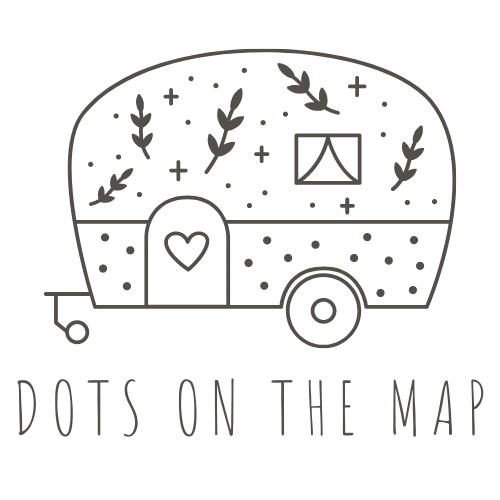A CHANGE IS GONNA COME
We left the Asheville area and rolled into Greensboro. We stayed in Greensboro a few days to hang out with a couple of our favorite cats who live near there. Good times.
We also toured downtown Greensboro. One of our stops was at a Woolworth store. Not just any Woolworth store. This was the Woolworth at which the civil rights movement of the 1960s received a lot of publicity when four North Carolina A&T students began a sit-in at the lunch counter. They had been planning to do so for some time and on the appointed day, they bought something from the drug store, kept their receipts, and then ordered something at the lunch counter. When the staff refused service, they protested that the store accepted their money for retail items, so there was no justification for refusing their money at the counter. The students rotated shifts and kept a presence at the counter. The protest began on February 1 and lasted until July 25. Bad publicity for Woolworth, nearly $200,000 in losses ($2 million in 2022 dollars), and a reduction in salary for not meeting sales goals, finally led the store manager to change Woolworth policy and it began serving the black community at lunch counters. While not the first sit-in of the civil rights movement, the Greensboro sit-in was an instrumental action, and also the best-known sit-in of the civil rights movement. In August 1939, attorney Samuel Wilbert Tucker organized the Alexandria Library sit-in in Virginia. In 1942, the Congress of Racial Equality sponsored sit-ins in Chicago, as they did in St. Louis in 1949 and Baltimore in 1952. College students led a successful 1955 sit-in at Read's Drug Store in Baltimore. The Dockum Drug Store sit-in in 1958 in Wichita, Kansas, was successful in ending segregation at every Dockum Drug Store in Kansas and the Katz Drug Store sit-in in Oklahoma City the same year led the Katz Drug Stores to end its segregation policy. Between 1958 and 1964, Oklahoma City would serve as a hotspot for sit-ins. You can read more at www.en.wikipedia.org/wiki/Greensboro_sit-ins.
The Woolworth store is now the International Civil Rights Center and Museum. We took the tour of the museum - it was really impressive and educational. We saw the 66 person lunch counter. The exhibits candidly reflected the horrors of Jim Crow, the Klan, and general hatred for black people. The docent wouldn’t allow photos of the tour so you’ll have to take our word for it.
We love Sam Cooke. Cooke was a mover and shaker as an entertainer when black people had trouble reaching that status. Because Cooke had serious influence, he had a step up. However, he was still a black man in a white man’s world. The white guys were very comfortable as long as Sam produced rock’n’roll songs. If what we read is true, Malcolm X encouraged him to do more for civil rights. His song, A Change Is Gonna Come, was his effort at a protest song. So beautiful. But it certainly made white establishment uncomfortable. Good for him.
Next, we drove up to a camp just outside of Lynchburg, Virginia. It’s beautiful country in the Appalachian Mountains. Lots of trees, hills, lakes, and rivers. We learned that Thomas Jefferson had a retreat located near Lynchburg. He called it Poplar Forest. We toured the grounds and went through Jefferson’s country home, the wine cellar, the rooms attached to the house where the cooking staff (slaves) worked, the staff (slaves) worked with cotton and looms, and staff (slaves) did the laundry. By the way, Jefferson was designing, building, planting, and living the dream. Slaves made that all possible. Still, he died with approximately $107,000 of debt, which is about 2 million of today’s dollars.
We went into Lynchburg to see the town. The downtown is built up on the hills that roll down to the James River. Very dramatic. We had lunch at El Jefe’s. We give three and a half paws out of five. Very good but not so good that we will revisit. Lynchburg is a large small city. Outside of downtown is the campus of Liberty University, the college founded by the weirdo Jerry Falwell. Speaking of weirdos, you can read all about the scandal of the former president of Liberty University, Jerry Falwell, Jr., the apple that didn’t fall far from the tree. If you’re tuned into politics and the evangelical movement, you’ll know that Falwell was one of the founders of the Moral Majority. It’s pretty surreal to realize that Lynchburg, this city in western Virginia, is the birthplace of an organization which gave life to decades of backwards thinking, elevating the careers of some Republican politicians, and the instigation of oppressive actions which still permeate society today. Step off of the soapbox and carefully get back on track.
We got on up the road to a campground close to Harrisonburg, Virginia. Our highlight was a visit to Luray Caverns. I think several caverns in the area claim to be the biggest, best, deepest, or whatever. Luray Caverns may be the best-known. We had an incredible time walking underground and seeing formations which are mind-blowing. It is hard to describe, so we’ll include some pics below.
Hasta la vista,
Betty and Buster
part of downtown Greensboro
part of downtown Greensboro
The front entrance to Poplar Forest
The dining room at Poplar Forest - nice tables to sit on
Bambi was playing on the grounds of Poplar Forest - the zoom blurred our photo - bummer
Luray Caverns
the water produces a mirror image of the ceiling
We don’t know the fancy name, but these are commonly called curtain formations














